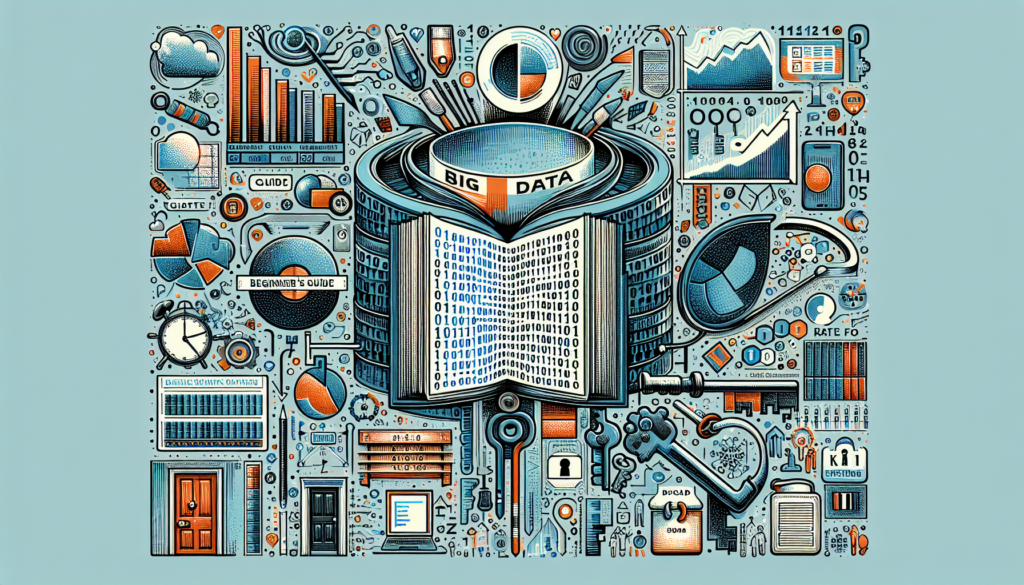In the current digital era, the speed at which data is generated is astounding. Now more than ever, mastery of Big Data is essential to understand and make informed decisions in various sectors. When talking about data analysis, it is imperative to look beyond mere collection and massive storage, to delve into the complexities of processing and the intelligence extracted from immense volumes of information. The purpose of this article is to break down the advanced concepts of Big Data and its analysis, providing a comprehensive guide for those who aspire to embark on this discipline, from its core theory to the most innovative practices that define the field today.
Big Data Fundamentals
Definition and Characteristics
At its core, Big Data refers to the act of handling and analyzing extremely large and complex data sets that traditional software applications cannot process efficiently. The distinctive characteristics of Big Data can be encapsulated in the five “V’s”: Volume, Velocity, Variety, Veracity, and Value.
- Volume: The amount of data generated by businesses, IoT devices, social networks, among others, is colossal.
- Velocity: Data flows at an unprecedented speed and need to be processed rapidly.
- Variety: Data comes in multiple formats: structured, semi-structured, and unstructured.
- Veracity: Quality of the data and its reliability.
- Value: The ability to transform data into useful and strategic insights.
Technological Infrastructures
Big Data infrastructure solutions include technologies such as Hadoop and Apache Spark. Hadoop is a framework that allows distributed processing of large data sets across clusters of computers using simple programming models. On the other hand, Spark is known for its speed in data processing and its ability to perform complex analytical tasks in memory, thus reducing disk access latency.
Data Analysis in Big Data
Analytical Techniques
Big Data analysis uses advanced methods ranging from statistics to machine learning and artificial intelligence. Predictive analysis, for example, employs algorithms and techniques like neural networks, decision trees, and regressions to predict future trends. Natural Language Processing (NLP) enables machines to understand and process human language, facilitating advanced text and voice analysis.
Analytical Tools
The market offers an arsenal of tools for Big Data analysis, such as:
- SQL-on-Hadoop: Tools like Hive or Impala, which allow executing SQL queries on data stored in Hadoop.
- NoSQL Databases: Databases such as MongoDB and Cassandra, designed to manage the variety and volume of data efficiently.
- Data Warehouses: Solutions like Amazon Redshift or Google BigQuery, optimized for analysis and large-scale data extraction.
Representative Case Studies
Public Health
In the field of health, Big Data analytics can revolutionize the way we understand diseases and treatments. Examples of this are seen in using massive data to detect disease outbreaks in real-time or in genomics analysis to personalize medical treatments.
Logistics and Transportation
Big Data analytics transforms the management of the supply chain and route optimization. A notable case is UPS, which uses data analysis to optimize package delivery, saving millions of driving miles and fuel each year.
Challenges and Future of Big Data Analysis
Data Privacy and Security
With the increase in data volume and variety, risks related to privacy and security persist. It is essential to design systems that ensure the protection of personal data and comply with regulations like GDPR.
AI and Machine Learning
Artificial intelligence and machine learning are bringing about radical changes in Big Data analysis. Predictive models become more accurate, and the ability to process natural language advances by leaps and bounds, promising a future where the insights obtained will be increasingly deep and actionable.
Technological Innovations
Innovations such as edge computing and serverless architectures propose more efficient methods for data processing and analysis. These technologies can change the current paradigm of data storage, bringing it closer to the data generation source for quicker responses and reduced latency.
In conclusion, as the vast stream of data continues to flow, proficiency in Big Data and its analysis becomes a crucial resource. Understanding the fundamentals, techniques, and tools, and staying abreast of current and future trends, will allow professionals to use this immense resource to foster innovation and efficiency in virtually every imaginable sector. The guide presented is not only a starting point for beginners but also a compendium for those looking to deepen or update their knowledge in Big Data analysis.

